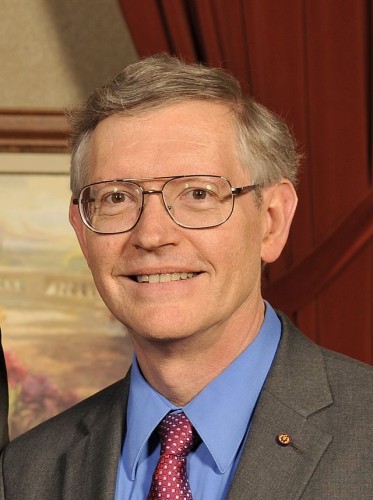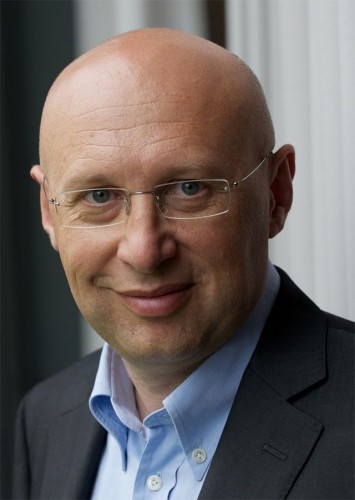The researchers, two Americans and a German, have developed different methods for preparing a sample for examination in such a way that the microscope can put back together a high-resolution image of the examined bone, in line with the field of nanotechnology and molecular biology

The 2014 Nobel Prize in Chemistry was awarded to three researchers: Eric Betzig of the Janelia Farm Research Institute, Howard Hughes Medical Institute, Ashburn, Virginia, USA; Stefan Hell Max Planck Institute for Biophysical Chemistry, Göttingen and German Cancer Research Center, Heidelberg, Germany; William Murner of Stanford University, Stanford, California, USA "for the development of high-resolution fluorescence microscopy"
For a long time the optical microscope held an unbreakable limit: it would never be possible to get resolution better than half the wavelength of light. With the help of fluorescent molecules, the winners of the 2014 Nobel Prize in Chemistry ingeniously overcame this limitation. Their groundbreaking work advanced the light microscope into the nano age.
In what has come to be known as nanoscopy, scientists can now see the pathways of individual molecules within living cells - they can see how molecules form synapses between nerve cells in the brain; They can track proteins involved in the development of Alzheimer's, Parkinson's and Huntington's diseases once they start to form aggregates; They can track the proteins in fertilized eggs once they begin to divide and become an embryo.
It was not at all obvious that scientists would one day be able to study living cells in the smallest molecular detail. In 1873, the German microscopist Ernst Abbe predicted a physical limit for the maximum resolution of ordinary optical microscopy: it would never be better than 0.2 micrometers. The three researchers won this year's prize for overcoming this limitation. Thanks to their achievements, the optical microscope has now entered the nanometer world.

The win is awarded for two separate principles. One is about the method of stimulated emission depletion microscopy (stimulated emission depletion microscopy) developed by Professor Stephen Hill in 2000. In this method, two laser beams are used - one causes fluorescent molecules to glow, and the other eliminates all fluorescence except for the one in the nanometer size. Scanning the sample, nanometer by nanometer, gives rise to an image with a resolution higher than that predicted by Abe.
Eric Betzig and William Morner, working separately, laid the foundations for the second method, single-molecule microscopy. The method relies on the possibility of activating the fluorescence of individual molecules in a branded way - off and on. Scientists image the surface several times, allowing only some of the molecules to glow each time. Placing the resulting images one on top of the other produces a compressed super image with resolution at the nanometer level. In 2006 Betzig used the method for the first time ever.
Today, the method of nanoscopy is widespread in the entire scientific world and provides new knowledge that has a great contribution to humanity, every day.
The chairman of the Nobel Prize Committee for Chemistry, Prof. Mons Arenberg explains further to a Swedish reporter's question what is super resolution?
"Super resolution refers to the Abbe limit (Ernst Carl Abbe, 1840-1905), in 1876, according to which it would not be possible to reach a resolution greater than half the wavelength of the light used. The methods developed by the three winners showed that this limit could be crossed, and not up to a new limit, but you can advance to any resolution you want. This is not applicable in every system because you have to perform operations on the sample, for example you have to make it fluorescent, but if the preparation is possible, the physical limit is far below and this means that we can observe smaller and smaller objects."
What new worlds can be seen in the new microscope?
"The easy way to understand this is to remember what the microscope was used for from the beginning. The first picture that was drawn after viewing it under a microscope was that of microbiology. Because we can see individual macromolecules moving within a living cell we can study chemistry at the level of a single molecule and how it behaves in real life. This is very important in chemistry because chemistry in its traditional form talked about observing a large number of molecules. Now we can watch a single molecule as it works in a chemical system. You can study the reactions as they occur and not just see the end result. This opens up new possibilities for chemistry and biochemistry. "
"The prize concerns all the fields in which scientific Nobel Prizes are awarded. It has great potential in medicine, it is a prize that has a physical aspect and of course the use of chemistry. It's one of the awards that blurs the boundaries between fields."
How does this development differ from other microscopes with high resolution, after all there are electron microscopes?
"The difference is that a light microscope causes less damage to the sample. If you want to view a cell with an electron microscope. First you have to cut it into slices because the electrons can penetrate through a thin layer of material. This means that the cell is dead, and we watch it as it dies layer by layer to see its interior. This means that we cannot see the dynamics and we cannot study internal processes. We've learned a lot from electron microscopy, it's a fantastic tool, but we also want to be able to observe live cells."
